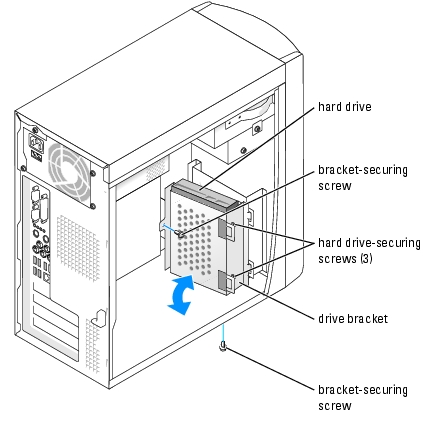 It's an accepted fact that hard drives are the weakest link in computer technology. The hard disk is where the operating system and all software applications are stored. Because of this, a properly working drive is essential in the operation of any computer.
It's an accepted fact that hard drives are the weakest link in computer technology. The hard disk is where the operating system and all software applications are stored. Because of this, a properly working drive is essential in the operation of any computer.
But since these drives are basically just an electro-mechanical devices, and like any other machine they will eventually breakdown and fail.
And then oops, without backups, all your family photos, legal documents and important emails are gone!
There are three levels of data or file recovery for a dying or broken hard drive:
1) Basic Level: The drive is working (your can hear it spin up but it will not boot to Windows)
This usually means that some essential Windows files have been comprised or damaged in some way. With the right software you can view your files and even copy them. You have to choices…
Use a Rescue CD: You can grab a bootable CD with hard drive utility software already installed on it. You can then make repairs or copy your files from your bad drive to a replacement. A good name brand rescue CD for Windows is the "Ultimate Boot CD"
Move the Drive: If you don't have a way of burning a rescue CD and don't want to wait for a copy to shipped to you; you can always move your bad drive and place it in another working desktop PC. Once installed you should be able to view all your files on the drive from a secondary slot (normally where the CD or DVD drive live.)
2) Intermediate Level: The drive works but you can't see the files you want using the methods above.
Okay, things are not going good. You at this point have to get out the big guns. You will have to download and run a data recovery program such as "Active UNDELTE", "Recover My Files", etc. Both of these programs are powerful, reliable, and easy to use and won't cost you an arm or a leg to buy.
With Active UNDELETE you can also make a bootable CD to run on a PC if you can't move the drive to another computer. Both have technical support options if you need further help.
3) Advanced Level: You have tried everything above but you still can't find that Last Will from Aunt Sue…
At this point you have probably spent several hours (if not days) without your PC and invested just over a $100 in software if you used all of the above products. Now, is the time for you to decide to either use a professional level recovery application or throw in the towel and take your drive to a recovery specialist.
If you have the time but not a lot of cash (understand that hard drive recovery services can cost hundreds or thousands of dollars) then you can ratchet it up a notch and buy a copy of the home version of EasyRecovery from Ontrack. Ontrack is one of the leading data recovery companies in the world.
But if time is more critical and money is no obstacle then bite the bullet and take your drive to a local computer shop that does recovery work. Or if that is not possible then contact a big service like Ontrack and ship your hard drive to them.
Data recovery can be expensive no matter who does it, so to be on the safe side and make file backups frequently and fully.
Author Chancer Reese - Sick of computer headaches? Tired of wasting money on that "computer repair guy"? To learn more fast and free fixes for your problem PC, visit http://www.fixcomputerproblemsguide.com



Comments on Computer Repair Tips - Broken Hard Drive? How to Recover Your Data Files
pc service guide @ 4:29 pm
Hello!Some great tips & tricks here. That was really very helpful!!!The essential guide to Intel's new killer New multi-threaded monster headed for your next PC Nobody has definitively worked out what Core i7 actually means. But it'll be mightily impressive anyway.
hard disk @ 12:47 am
If hard drive crashed, that's a huge losses, so we need some technical knowledge about hard disk recovery, backup, format, partition and hard drive upgrade to solve our hard drive failure problems
Evangelina Hurst @ 4:56 am
by the way, this Windows boot CD is easy to use and works
terabyte external hard drive @ 7:05 am
I have used active UNDELETE and other programs like this before but im sure some of them simply look in the registry whereas others actually recover deleted files. There is a program by Mcafee that i used years ago, Im pretty sure that was called something undelete and that properly recovered files that had been deleted a while ago.
Thanks for the post, John
cheapest memory @ 7:07 am
This is all well and good and this guide is pretty much all you can do if you have lost files. However if you cant get your files after this then the sections on your hard drive are probably corrupted.
If this is the case then there really isnt much you can do. This will only happen however if your hard drive has taken a knock when running.
Delores Lyon @ 7:08 pm
I recently got a brand new laptop for my photography business. I have all of my clients' photos on it and I want to make sure that my computer hard drive can be recovered if anything happens to my computer. Are there any preventative measures I can take to make sure I don't lose any data?
Dragos @ 6:20 pm
The best is to prevent than to cure. I always keep two backup copies of my main hdd( I keep one into a portable flash drive and the other to a cloud service)The main reason why I do that is because any kind of recovery won't be able to recover 100% of your files.